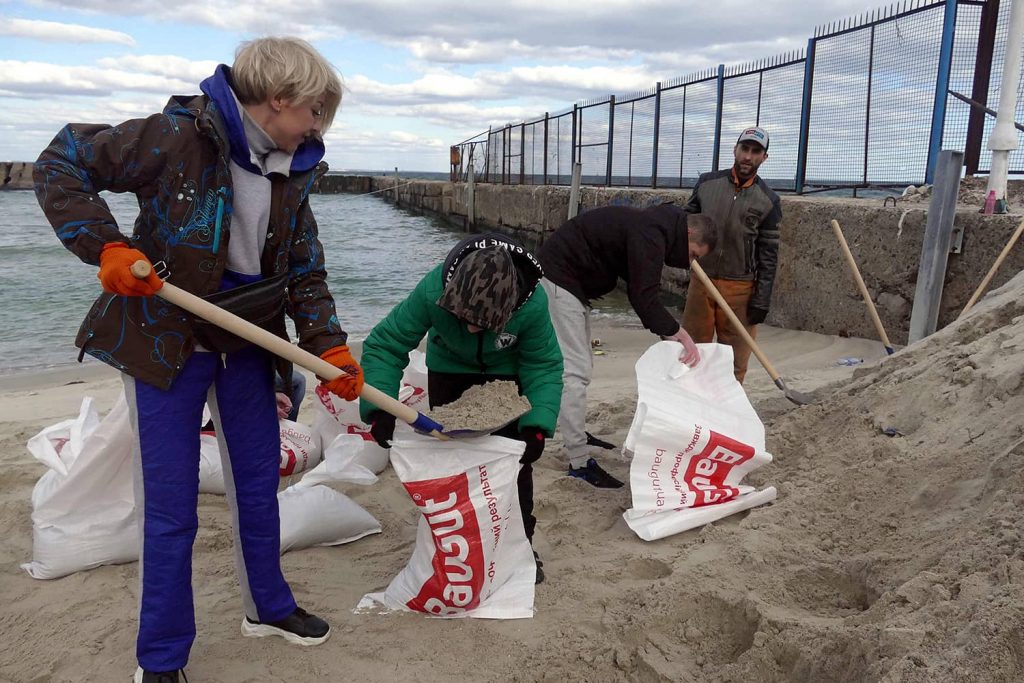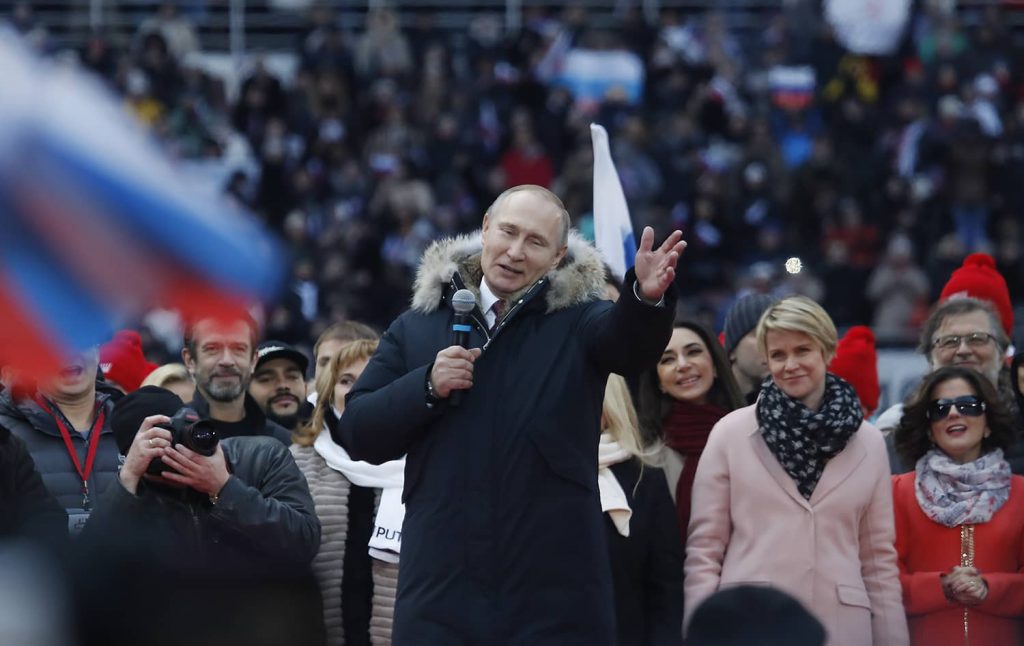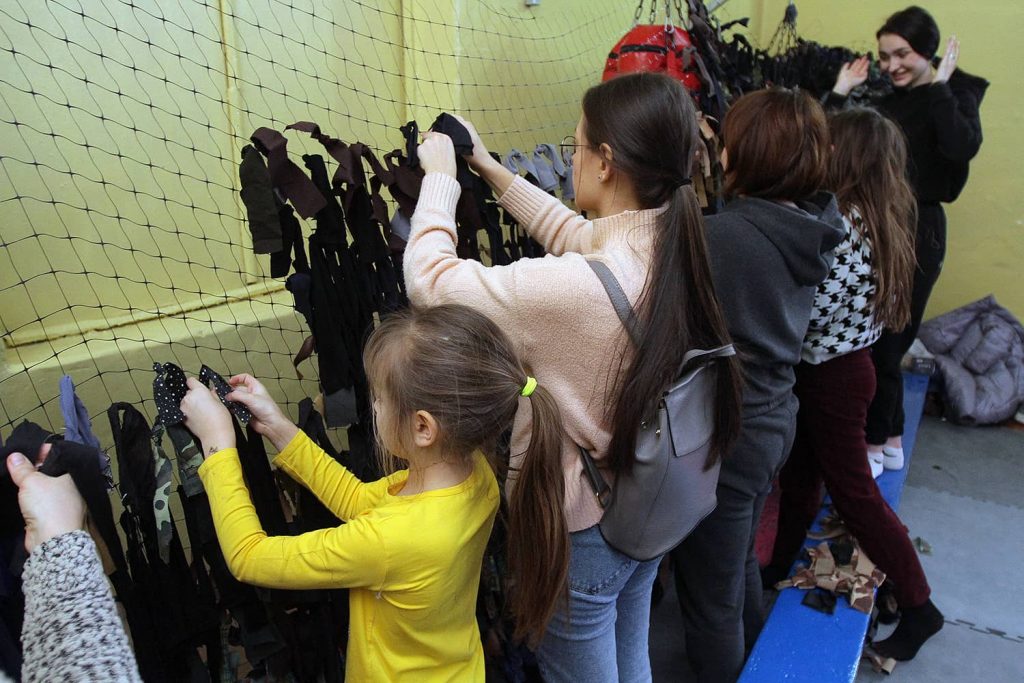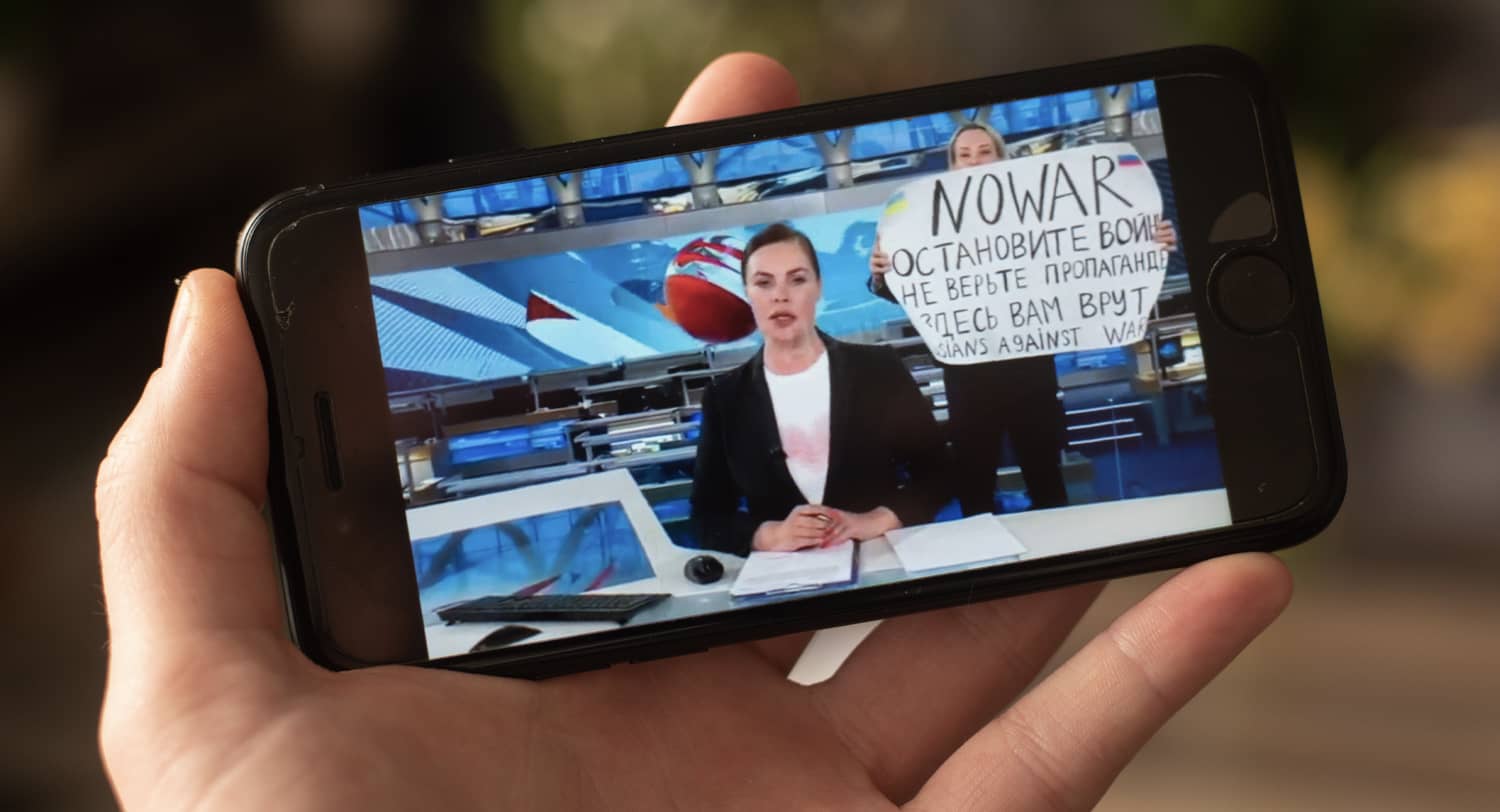In recent years, among scholars of war, there has been a growing consensus that nonmilitary factors have an increasing impact on determining the aims of war, on the choice of warfare methods, and sometimes even on the conduct of the war itself. A key aspect in this regard is the impact of public opinion. Until the 20th century, public opinion (where the term applied) largely perceived the use of force as a legitimate tool for achieving the states’ interests. The horrors of the two world wars, however, have led to the delegitimization of the use of force, mainly but not exclusively in Western democracies (at least at the level of slogans that the Soviet Union took pride in leading among the “peace camp” worldwide). Some democracies are so attentive to public opinion that they cannot go to war without broad support from their citizens, possibly reflected in a parliamentary vote of approval.
Although the war in Ukraine is still ongoing at the time of writing, my point in this essay is that one of the main explanations for Russia’s failure, so far—contrary to most expectations—to secure a swift victory in this war can be found in the combination between low national morale in Russia and a surprisingly high level of resilience in Ukraine. It seems that President Putin assessed correctly Russian public opinion as being hesitant and therefore sought to manipulate it, drawing on powerful symbols and memories (hence the talks about the “denazification” in Kyiv) in order to increase its willingness for sacrifice. At the same time, however, it can be assumed with high certainty that he failed to read the resilience of the Ukrainian public and its determination to fight.
>> Military Matters: Read more from Pnina Shuker
The Significance of Resilience in Wartime
Michael Howard has taught us that societal resilience and the willingness to bear the cost of war are no less important than the military capabilities of a nation and its achievements on the battlefield. Such resilience may outweigh operational and technological inferiority in a net assessment equation. A significant component of societal resilience is national morale, defined by Hans Morgenthau as one of the most important components of national power.
Casualties during war, by nature, can lead to demoralization. The prevailing view is that democratic leaders are more sensitive to casualties than autocratic ones, since they have a greater degree of accountability to their citizens, or else they cannot expect to remain in office. A well-known claim in this regard has been Edward Luttwak’s argument, namely that sensitivity to casualties is a permanent feature in Western societies in the post-Cold War era and its roots lie in demographic, economic, and social developments. However, throughout the history of wars, one can find clues that non-Western societies are also are attentive to public opinion but to a different extent and with other manifestations. Thus, for example, the Soviet leadership recognized the heightened sensitivity of the public in the Soviet Union to casualties, and this had an effect on its choices, as well as on those of the decision makers in Russia later. All this had an impact on the way they conducted the wars in which they were involved.

Considering Public Opinion is Not Exclusive to Western Societies
According to Fukuyama, during the war in Afghanistan, Soviet operations apparently reflected great sensitivity to casualties. The Soviets relied on heavy preparatory fires with airstrikes and artillery and used mechanized infantry columns to clear lines of communications. The Soviet forces remained quite invulnerable to the Mujahideen since they refused to dismount from their armored vehicles, which hampered their ability to search out and destroy the enemy. There was little use of dismounted infantry or airborne troops to clear ridges and take the high ground.[1] Despite Soviet efforts to minimize their losses, which included concealing the number of casualties, the years of fighting in Afghanistan left at least 15,000 invading Soviet soldiers dead. This high casualty toll had a demoralizing effect on the home front and led to the unprecedented establishment of the Committee of Soldiers’ Mothers, which is still active today in the context of the war in Ukraine. Similarly, during the first Russian war with Chechnya, after its early failures in Grozny in 1994, Russian forces changed their approach and sought to avoid direct fighting in urban areas. Instead, they fought from a distance, using massive aerial and artillery bombardments to destroy the city, finally gaining control in February 1995. Russia’s second war against Chechnya in 1999 also relied heavily on the use of massive firepower and the indiscriminate use of force. The Russian siege of Grozny (1999–2000) devastated the city, prompting the UN to label it “the most destroyed city on Earth.” Such tactics were also on display during the crucial stages of Russia’s intervention in Syria, from September 2015 onward.
With the war in Ukraine, President Putin seems aware of the fragile state of domestic public opinion and is trying to influence it on two parallel planes: physically, by seeking to minimize Russian casualties in the battlefields and gain military achievements by other means; and cognitively, by trying to persuade the Russian public about the necessity of war and to consolidate public support for the invasion.
The patterns of Russian warfare in Ukraine reflect the first effort. So far, the Russian forces seem to prefer avoiding deep maneuver, which could cost them mass casualties, especially considering the fact that they managed to achieve aerial superiority. Therefore, the war from the Russian side has been conducted mainly from the air as well as by heavy reliance on artillery and missile strikes against major contested cities, such as Kherson, Kharkiv, and Mariupol, in order to demoralize the Ukrainian people. Additionally, the Russian decision to deploy Chechen forces to Ukraine also can be interpreted as part of the Russian will to prevent demoralization of the Russian forces.
Since the very beginning of the war, Chechen forces have played a role in Moscow’s plans. Beyond the psychological effect inherent in it, with Chechen forces having a reputation for being particularly cruel, the logic behind their deployment to Ukraine is that, unlike most Russian soldiers, they do not share language, culture, religion, family ties, and friendships with the Ukrainian people. A Russian soldier who fights in Ukraine sees civilians who could have been members of his family. This is also the reason why Russian soldiers who were captured claimed that they were told that the invasion was only an “exercise” or “special operation.” The Kremlin estimated that Chechen forces would have far fewer inhibitions in carrying out the mission that could cost many Ukrainian lives. One can also assume that operating the Chechen forces will gain more legitimacy within Russia for the war, instead of sending Russian citizens to fight. Furthermore, using Chechen volunteers in the war in Ukraine allows Putin to minimize international and domestic criticism alike, by claiming that he had nothing to do with their deployment and rather place the blame on their will to volunteer to fight in war zones.
It is not the first time that Russia has deployed irregular fighters to its war zones: Chechen forces have been sent to Georgia (2008), East Ukraine (2014), and Syria (2015). Recently, the Kremlin also declared that it was receiving a reinforcement of foreign fighters, mainly Syrians with experience of guerrilla warfare, to boost the country’s manpower (given that regular Russian troops, as distinct from volunteers for professional service, are not supposed to be sent into battle beyond Russia’s own borders—as detailed below).
In the cognitive realm, state-owned media coverage of the war manipulates domestic public opinion and convinces the public that the Russian forces are trying to minimize both civilian casualties and collateral damage, while seeking to “denazify” Ukraine and “liberate” its people. Thus, Russian TV screens present accounts of a Kremlin Kremlin mission that is humanitarian—one in which “surgical” airstrikes target Ukrainian nationalists and spare civilians. Additionally, a new law, which passed at the beginning of March, forbids journalists covering Ukraine from using the words “war” or “invasion,” and instead must use “special military operation”—the term used by President Putin when he announced Russian forces would enter Ukraine to protect Russian speakers in Donbas and to remove the “neo-Nazi” elite from power. An additional law penalizes any media coverage of the military that contradicts the Kremlin’s messages or is deemed as denigrating the armed forces. Since the war in Ukraine began, Putin has exerted iron control over the news outlets in Russia, and state-owned media is not publishing casualty numbers. As a matter of fact, President Putin declared already in 2015 that all Russian military deaths will be considered state secrets.

The Low Russian Willingness to Fight in Ukraine and its Potential Impact on the War
It is becoming quite apparent that President Putin’s concerns regarding demoralization among the Russian public were justified, Although the common international belief is that Russian society will fully support the Kremlin in a prolonged confrontation, invading Ukraine was unpopular even before one shot was even fired. Deploying Russian troops into Ukraine has actually not been popular since the Russian invasion of eastern Ukraine in 2014. A Washington Post poll, conducted in December 2021, revealed that only 8% of Russians think their country should send troops to fight against Ukraine. Furthermore, polls conducted over the past decade show that Russians opposed any plan to annex Ukraine or to re-establish the Soviet Union. Yet, early polls conducted immediately after the Russian invasion on February 24 indicate that the majority of Russian respondents—about 60%—endorsed the “special military operation” and expressed support for President Putin. However, these results should be treated with great caution, since citizens living in repressive states may avoid expressing dissenting views in surveys about political issues. But even if these polls results are accurate, they can be attributed to the familiar “rally around the flag” effect, characterized by high domestic support for war at its initial stages that dissipates as the war lingers.
Moreover, there is clear evidence that large segments of the Russian public have not accepted the Kremlin’s justifications for the invasion. Several thousand people have been detained in cities across Russia for participating in protests, and a growing number of Russian celebrities, journalists, and other public figures, such as 2021 Nobel Peace Prize winner Dmitry Muratov, have publicly opposed the war in Ukraine, using their social media accounts to express their opposition to the war’s continuation. At least 100 journalists signed an antiwar petition, among them employees of state-owned media, and more than 150 Russian scientists signed an open letter against the “unfair and frankly meaningless” Russian military action in Ukraine.
Despite the Kremlin’s efforts to effectively control the constant information flow from Ukraine—mainly by blocking Twitter, Youtube, and Facebook and by spreading propaganda with the state-owned media—Russian citizens do have an idea of what is really happening in Ukraine through alternative platforms, such as Telegram and TikTok. Thus, the Russian public has also seen the images of defeat from the battlefield, such as Russian prisoners of war, destroyed Russian vehicles and aircraft, and reports about the elimination of four Russian senior generals by the Ukrainian forces, illustrating to the Russian public that the war in Ukraine is not going well for Russia.

Recently it appeared that even the older generation, the hard core of Putin’s popular support, have begun to show cracks in their response to the way Russia treats its own soldiers and their families. The families of Russian conscripts are angry that President Putin violated his agreement to not deploy conscripts to Ukraine, after many conscripts had been killed during the two Chechen wars. As a result, Putin had agreed that only “professional” soldiers were to be sent to the front, as the Russian public was more agreeable to deploying professional soldiers, who volunteered for service and receive extensive and prolonged training. Despite Putin’s promise, conscripts are being forced into signing contracts of voluntary service to change their status.This has led many young men of conscription age to try to avoid military service—a phenomenon that has caused a recruitment crisis, from which the Russian army has only recently begun to recover.
A recent report published by the Pentagon described the low morale among Russian troops. The report claimed that in some cases Russian soldiers are parking their armored vehicles and tanks and are looking for shelter in the woods. These manifestations of demoralization can be explained by the fact that some of the troops perceive the war as unjustified and feel deceived, since they were told that the war would be short and that they would be welcomed by the Ukrainian people. The great shortage in food and equipment that they are experiencing (some of them have been reduced to robbing food stores for survival) has likely also affected their willingness to continue fighting. According to recent reports, some troops are intentionally shooting themselves in the leg to avoid fighting, using Ukrainian ammunition to make it appear as if they were hit by enemy fire. Recently, British intelligence also claimed that many of the Russian troops are undermotivated and simply refuse to carry out orders.
Furthermore, despite Russia’s refusal to disclose the death toll, the Ukrainian Ministry of Defense provides ongoing reports regarding the casualty numbers. This information sows demoralization among the Russian public while it also encourages the Ukrainian public. Additionally, the Ukrainian military allows captured Russian soldiers to hold telephone conversations with their families, thereby, in effect, using them to undermine Russian public resilience, in hopes that it would intensify the public pressure on Putin to cease Russia’s aggression in Ukraine. The Ukrainian government is also trying to tempt Russian soldiers to defect in exchange for monetary compensation.
For the time being, it appears that the war in Ukraine is developing into a war of attrition, in which resilience is bound to be of even greater importance. According to US intelligence estimates, in the first month of the war, Russia suffered between 7,000 to 15,000 military casualties—more than the US sustained in both the Iraq and Afghanistan wars, which lasted two decades. As the war continues, the casualties will mount and will lead, inevitably, to diminishing public support, especially since Russian soldiers, as well as the public, are not convinced that the war is justified. Together with lack of military achievements, demoralization is expected to continue to spread among Russian society.
Other than the great human toll that Russian society is paying during this presumably unnecessary war, Russia is also experiencing firsthand the economic consequences of the war. Violent clashes over basic products such as oil, sugar, and salt have already become routine. Recently it was reported that for the first time since the Russian Revolution in 1917, Russia is in danger of insolvency, following the sanctions imposed on it, which included the freezing of its dollar accounts in Western countries. It is likely that as the sanctions imposed on the Russian public become heavier, the prospect of public unrest to end the war will become greater. Therefore, intensifying sanctions and a useful Ukrainian information warfare can help deepen the cracks in the Russian public’s resilience: whereas Ukrainian society may continue to demonstrate its high resilience. This asymmetry between the two countries’ resilience can be a game changer for Ukraine.
>> Military Matters: Read more from Pnina Shuker
[1] Francis Fukuyama, The Future of the Soviet Role in Afghanistan: A Trip Report (RAND Corporation, 1980), p. v.

